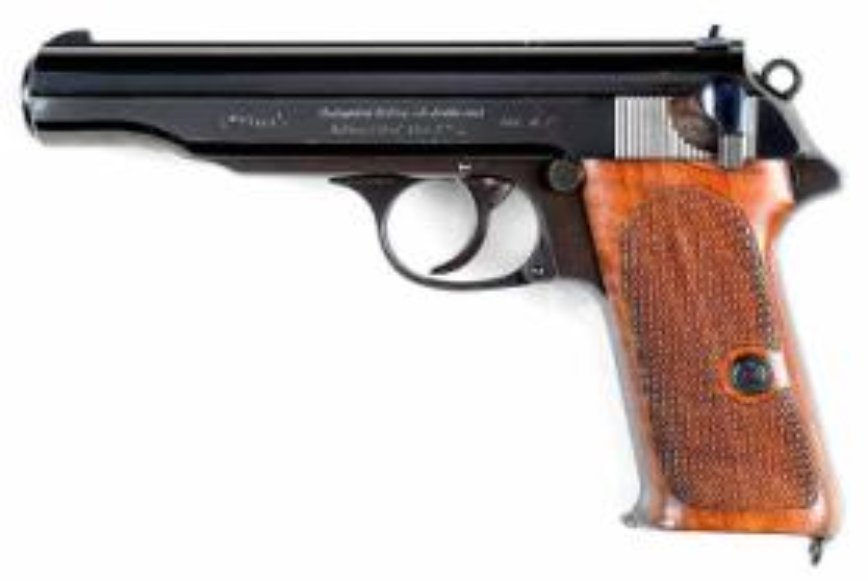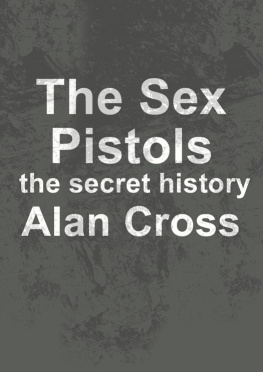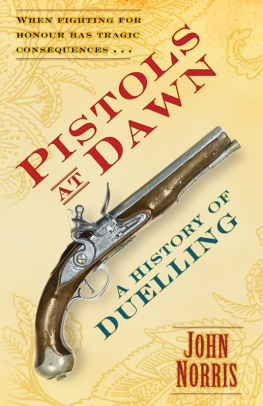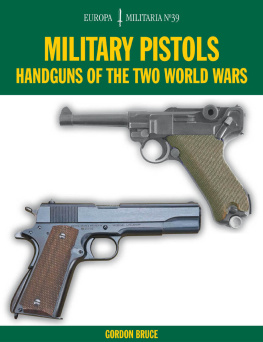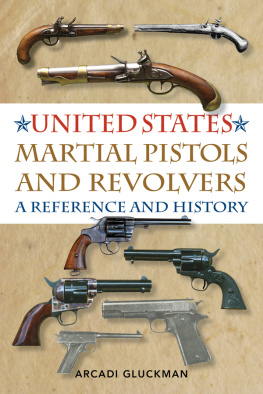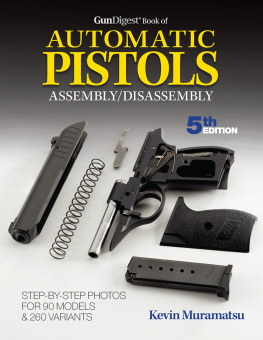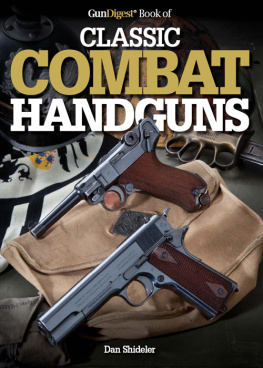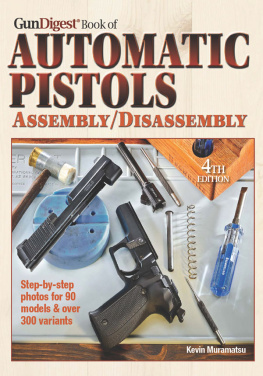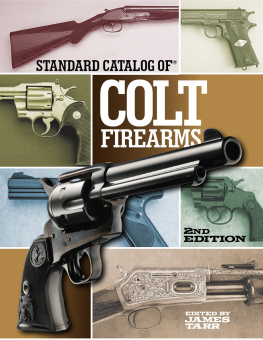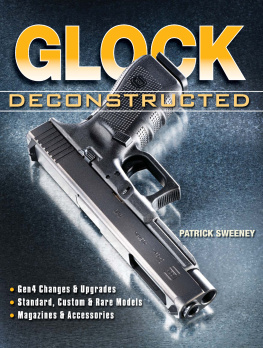The Best Samples of Automatic Pistols of World War II
History of the Firearms
Francis W. Brown
All rights reserved
Francis W. Brown, 2017
PBS Astreul, Kiev, Ukraine, 2018
None of the parts of this book cannot be copied without the consent of the author or the right holders
Design by Fred Burgess
Fotos by:
Jim Thorston
Daniel Smith
Gina Smith
Tanya Dolski
Sam Sanderson
Chris Parkinson
A pistol is a firearm designed for firing with one hand. Usually the effective distance of the defeat of pistols does not exceed 50 meters. There are two subclasses of this weapon - a revolver and a self-loading (or automatic) pistol. By the beginning of the Second World War, revolvers were already considered obsolete as a class, but they were used by many countries.
The revolvers are powered in the form of a drum, which are a chamber and a magazine at the same time. At the time of the shot, the chamber becomes part of the barrel of the weapon. The advantages of this type of gun include reliability, durability and fault tolerance. But because of the long reloading and the small number of cartridges, the revolver is poorly suited to the needs of the military. It cannot provide an acceptable density of fire, and therefore was supplanted by a new type of weapon - self-loading pistols.
Self-loading and automatic pistols use the energy of recoil or powder gases to bring the weapon in readiness for the next shot. Cartridges in the chamber are served through a special magazine. In pistols, the magazine is removable for convenience. The advantages of pistols - high rate of fire and quick reload.
The first pistols appeared approximately in the middle of the 16th century, when spark gates (Romanian and flint) for manual fire-arms were invented. For the past two years, the pistol practically did not change in the structural relation and because of the duration of the discharge from the barrel, it was the practical weapon of uniform action. Although some craftsmen used to manufacture multiple pistols in order to increase their efficiency, they didnt have widespread use.
In this book, the headboard will look at the most successful samples of pistols that were used in World War II.
Content:
Unfortunately, English is not the author's native language. All errors and inaccuracies in the book remain on his conscience.
GUNS AND REVOLVERES BEFORE THE SECOND WORLD WAR
By the end of the 19th century, the armies of the world seemed to be firmly accustomed to the revolver. But at this time there was a formidable competitor to the revolver - a self-loading pistol.
PISTOL BOOM
The emergence of self-loading pistols was the result of the invention of smokeless powder and the improvement of engineering technology and metalworking. The development centers of pistols were Belgium, Germany and Austria-Hungary. The first commercially successful was the gun of H. Borchard, Borchardt C-93, the release of which began the plant Ludwig Love and since 1896 continued to DWM. In 1892, Schwarzlose patents the design of a self-loading pistol, Bergman patents in 1893, Manliher, Salvator and Dormus in 1894, and Mauser in 1895.
The beginning of the pistol boom was laid in 1900, when the Parabellum appears. In 1903, the release of "Browning" began. There is a division of pistols into the military, for self-defense and police use, pocket, long-barreled carbines with attached butts for cavalry, special parts.
Formed and pistol cartridges. Pretty soon, a number of long-lived samples appeared, which gave rise to whole families of cartridges (for example, 7.63 25 Mauser, 7.65x 17 and 9x 17 Browning, 9 19 parabellum).
REVOLVERS
If for self-loading pistols the 1890-1910s were a period of formation, then for revolvers it was a period of improvement. By that time, the main manufacturers of revolvers were already identified: Colt Firerms, Smith and Wesson. Iver Johnson in the USA or Webley and Royal Small Arma Factory, Enfield-Lock in the UK. The main constructive schemes of breech-loading revolvers for a unitary cartridge; "Critical", with a hinged door of the drum, with a removable or reclining drum, with a sliding barrel and a drum, and others - were formed even earlier.
There were already self-cocked revolvers. New systems also appeared - say, the Nagant system, which was put into service in Russia in 1895. Since the end of the 19th century, the development of new cartridges and the use of new materials and technologies have become the main directions of revolvers development. Somewhere in France, Switzerland and Russia, they went to reduce the caliber of an army revolver to 7.5-8 mm in the hope of making the revolver itself smaller and lighter, somewhere like in the United States or Great Britain they kept the former, large caliber revolver cartridges (38, 45, 455), but black powder was replaced by smokeless. The power of the revolving cartridges with smokeless powder and the need for fast reloading determined the popularity of the whole-frame scheme and the drum tilted sideways (the Colt Army Special and Smith & Wesson Military End Polis systems). Attempts to create self-loading revolvers ended in failure.
For a long time, the advantage of a revolver over a self-loading pistol was considered to be greater reliability, but the pistols quickly caught up with them in this indicator. The real advantage of the revolver is the low sensitivity to the variation in the power of the cartridge (there is no automation system) and the ability to quickly make the next shot in the event of a misfire, which is extremely important for a short circuit. And nevertheless pistols gained more and more popularity.
FIRST WORLD WARRIOR
By the beginning of the First World War, self-loading pistols had already taken place in the weapons systems of a number of armies. In trench battles, pistols and revolvers in combination with hand grenades and combat knives turned out to be much more convenient than rifles and even carbines. In the melee faster rechargeable pistol turned out to be more convenient than a revolver. The Russian army bought Mauser C-96 pistols abroad, Colt M1911, and Victoria:. The British Army complemented the Webley-Scott Mk I pistols and the Webley Mk IV revolver with Mk V and Mk VI revolvers and a Bebley-Scott pistol No. 2 Mk I. 1879 German Reichswehr, except for the standard Parabellum P08 and Reichsrevolver. , used pistols "Mauser" C-96, "Mauser" 1914, "Walter" model 4, "Sauer" 1913, "Beholla". Eger Pistole, Dreyze 1907
Tactics assault groups further increased the popularity of the gun. Pistols and revolvers were needed by "technical troops" - motorcyclists, drivers, telecom operators. During this period, the Italian Beretta launches self-loading pistols. the production of pistols for foreign orders is deployed in Spain (Ruby and Victoria). There were also new models of revolvers, such as the Colt M1917 and Smith and Wesson in the USA.
BETWEEN WORLD WARS
After the First World War, machine guns were considered the primary systems of small arms, but personal weapons were not ignored. The need for it was determined by the growth of commanding staff, the development of "technical troops", the need for auxiliary weapons for the calculation of heavy weapons and airborne troops. Revolvers and pistols, which were already in service, were modernized, and a number of new systems were created. A pistol TT arr. 1930 appeared in the USSR, the revolver Nagan arr was upgraded. 1895/30. In the United States in 1926, a modernized Colt M1911 At appeared. A number of new pistols entered service with the armies of the world in the 1930s. The experience of the assault groups of the First World War determined the interest in automatic pistols - cobish pistols-machine guns. It is worth noting that during this period, the secret services received the first systems of "silent" pistols and revolvers.

